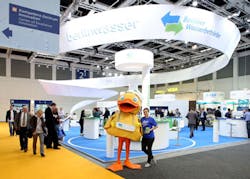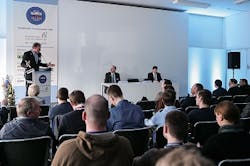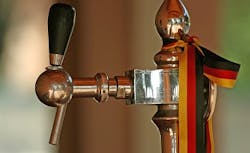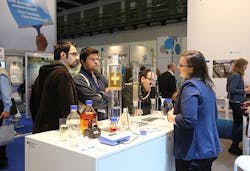Five reasons to keep Wasser Berlin International in the diary
BERLIN, Germany – Let’s face it, the industry is spoilt for choice when it comes to water events, conferences and exhibitions.
The bi-annual Wasser Berlin International used to be a firm staple in the calendar for water professionals covering the international markets.
However, the rise of IFAT as one of the main, go-to European shows means that if many companies must choose between this and Wasser Berlin – they will go for the former.
The IFAT juggernaut continues to grow and sticks to a simple formula for its bi-annual event in Munich: sell water and waste technology companies exhibition space and pack the halls with as many potential buyers as possible.
It works well: there was over 136,000 visitors and over 3000 exhibitors from 168 countries at the last count.
While Wasser Berlin may have the perception for shrinking and becoming in Germany what Pollutec is in France – a domestic show – there are still pockets of innovation and reasons to attend.
Here’s five:
1) Learn from the German water utilities
Both Berliner Wasserbetriebe and Hamburg Wasser, as the names suggest, provide water and wastewater services around the areas of Berlin and Hamburg. Germany may be known for its engineering efficiency and automotive mechanical excellence but this also benefits its water sector. As can be read here, Hamburg Wasser has evolved into a self-sufficient utility – it produces more electricity from biogas and renewables than it consumes. Both will be exhibiting at the show and both are worth meeting.
2) No Dig Berlin
The third No Dig Berlin focusing on pipeline construction will be held in conjunction with Wasser Berlin. The side event brings together the trenchless technology and pipeline construction communities. A two-day symposium will take place in conjunction with the International Pipeline Symposium.
3) Beer
What would a trip to a German show be without a trip to a famous beer-hall to sample the local weißbier (wheatbeer)? The clinking of giant steins is even more satisfying after a long day walking the show, with the ‘networking’ often continuing long into the hazy evenings. For the brave, shake off the inevitable morning-after hangover with a hair of the dog before heading back to the Messe.
4) Tech innovation
Many water exhibitions now host Innovation Pavilions, or Innovation Corners, or a Dragon’s Den style Innovation Showcases with start-ups pitching to a panel of industry experts. Wasser Berlin is no exception. New to Wasser Berlin International 2017 will be the Innovation Plaza. The idea is to bring new products, services and technical innovations together in one place. The Federal Ministry of Economics and Energy will be sponsoring a display for German companies. Check it out in Hall 3.
5) Explore the city
When in Rome, or in this case Berlin, why not take time before or after the show to explore? Germany’s capital city is full to the brim of sights, including the Brandenburg Gate, Reichstag, Berlin Wall and many others. The city effortless blends memories of the old with the new. There is no shortage of traditional Bavarian restaurants in the ever-buzzing urban sprawl for when you need to refuel on knödels (dumplings) and weißbier (see point 3).
###
- Wasser Berlin takes place from 28-31 March 2017. More information can be found here.








